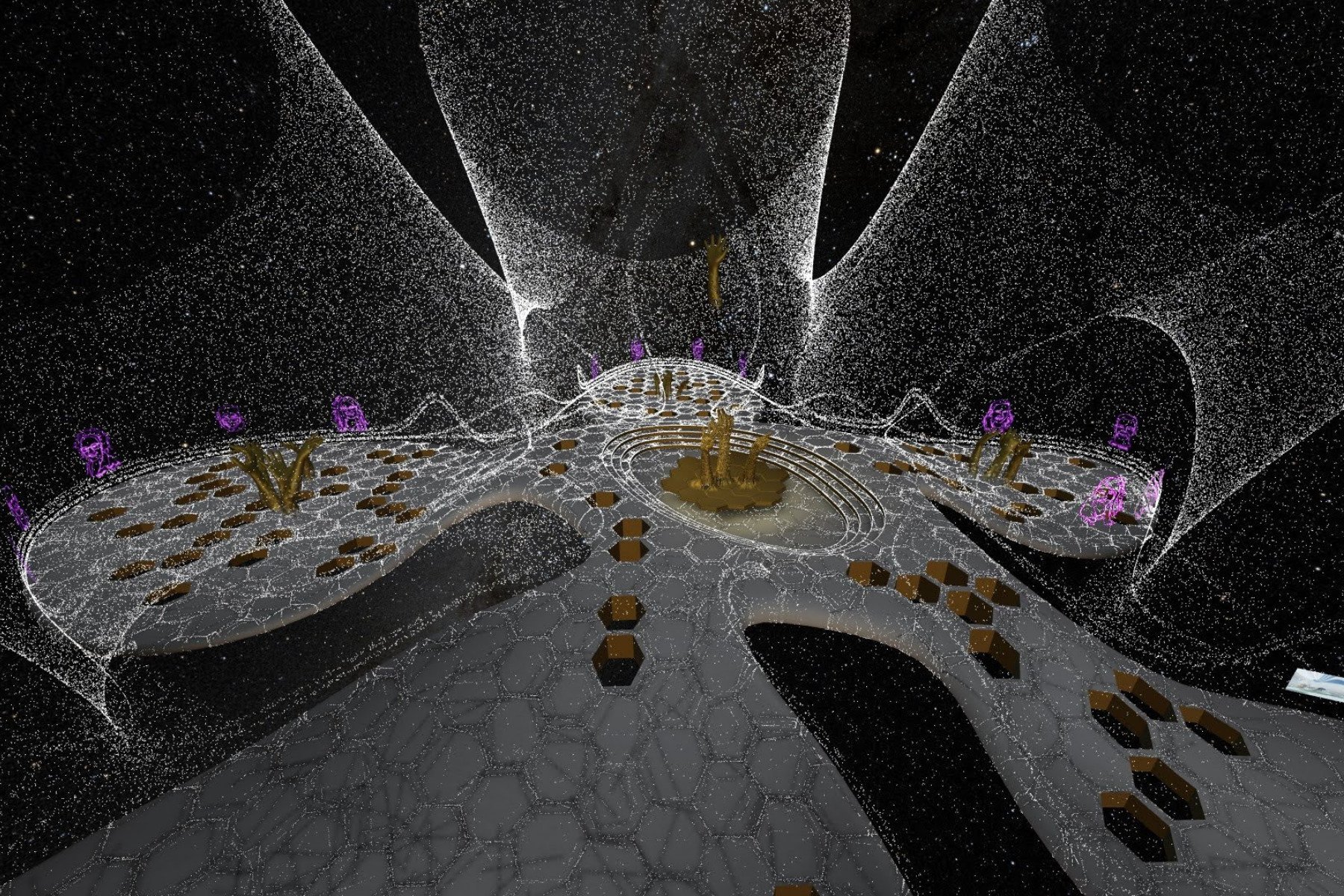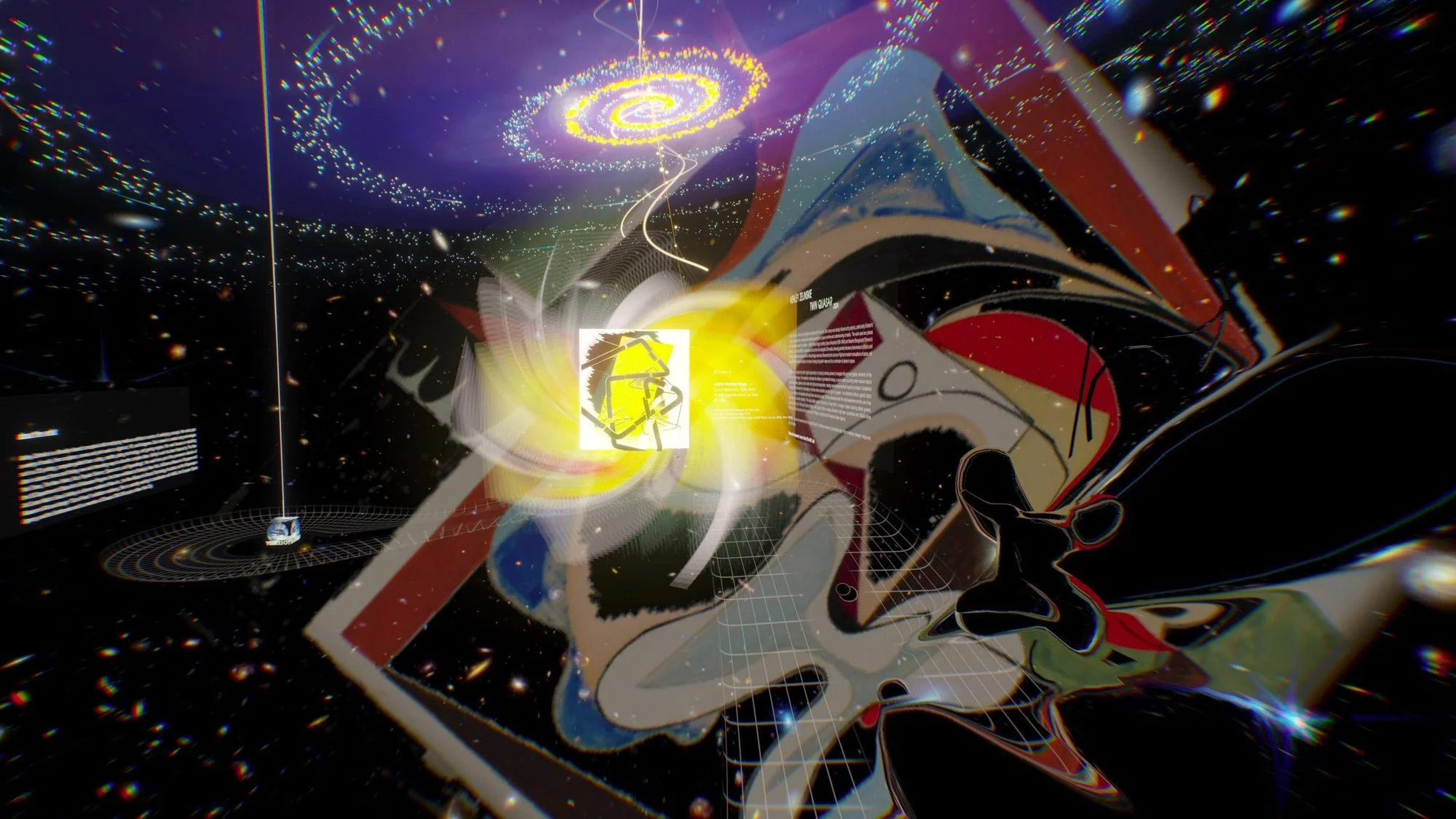VITRINE
EXHIBITION SERIES
FEB 21, 2025
–
MAR 21, 2025
Ashley Zelinskie
Luminous Objects
Luminous Objects features recent work by post-New Media artist Ashley Zelinskie. The exhibition includes interactive VR artworks that can be experienced online. By combining code, recursive structures, redundant patterns, and emergent media, Zelinskie’s work visualizes data in abstract forms to reveal new ways to describe complex ideas.
“…This work is not for us. It is for the future. And robots. That is, each of these pieces takes for granted that computers will outlast their makers, that technology will supplant humanity, and that craft should follow suit. This is art for the Singularity…”
— Ashley Zelinskie
Ashley Zelinskie is a New York City based artist working in a variety of media, from sculpture, canvas and print works, to digital art, VR, and holograms. Each artwork is created using cutting edge technology such as 3D printing, computer-guided laser cutting, satellite plating technology, and gaming engines. Zelinskie’s work has been featured in The New York Times, The New Yorker, and Hyperallergic. Her work has been exhibited at Sotheby’s New York, ArtScience Museum in Singapore, and Art Center Nabi in Seoul. She is currently working in coordination with NASA, the European Space Agency, and the Smithsonian, and she is a member of Onassis ONX.
Unfolding The Universe, 2021, video documentation of interactive VR headset artwork
Twin Quasar, 2024, video documentation of interactive web-based VR artwork
About the Artworks
Unfolding the Universe is a work created in commemoration of the launch of the James Webb Space Telescope and in coordination with the James Webb Space Telescope team. The VR artwork is part of a virtual installation that 3D animated sculpture and interactive portraits of the James Webb Space Telescope scientists and engineers. The work honors the extraordinary humans behind Webb and their decade-long stories of creating the telescope. The operatic sound scape was produced in collaboration with sound conceptualist, composer, and performer JU-EH using ethereal sounds and a countdown to launch. The award-winning team at Metaxu.studio worked one-on-one with Zelinskie to produce James Webb-inspired digital architecture. The space combines a point cloud architectural exterior with gold hexagonal tile flooring, all situated in the vastness of space. The architecture features several wings surrounding a central atrium, allowing for intimate encounters with the Webb team portraits. One wing was purpose built for hosting VR events with the Webb team members.
Twin Quasar is a digital art project commissioned for the Whitney Museum of American Art artport, an online gallery space for net art and new media art. Twin Quasar is a three-dimensional artwork and space in the Whitney Museum Virtual Landscape that intertwines science with art history, building on the artist’s eight-year coordination with NASA's James Webb Space Telescope team and discussions with Tim Rawle, a scientist at the European Space Agency. The work uses two pieces from the Whitney Museum’s collection — László Moholy-Nagy’s painting Space Modulator (1938–1940) and Rosalind Bengelsdorf Browne’s watercolor Compotier II (1938) — as sources and turns them into navigable 3D models, drawing parallels between phenomena in physics and the artists' exploration of space and form. When viewers approach the 3D models of the original works, the forms depicted in them reveal themselves as protruding from the virtual canvas, becoming layered in three-dimensional space and allowing viewers to navigate through the abstract shapes. The experience replicates the effects of gravitational lensing, a cosmic event occurring when massive objects such as black holes, galaxies, or dark matter bend light around spacetime, creating natural lenses that both magnify and distort. Gravitational lensing was first observed at an observatory in Arizona where scientists saw the light of a quasar — an extremely luminous galactic object — through a galaxy, and it appeared as though there were two quasars.


